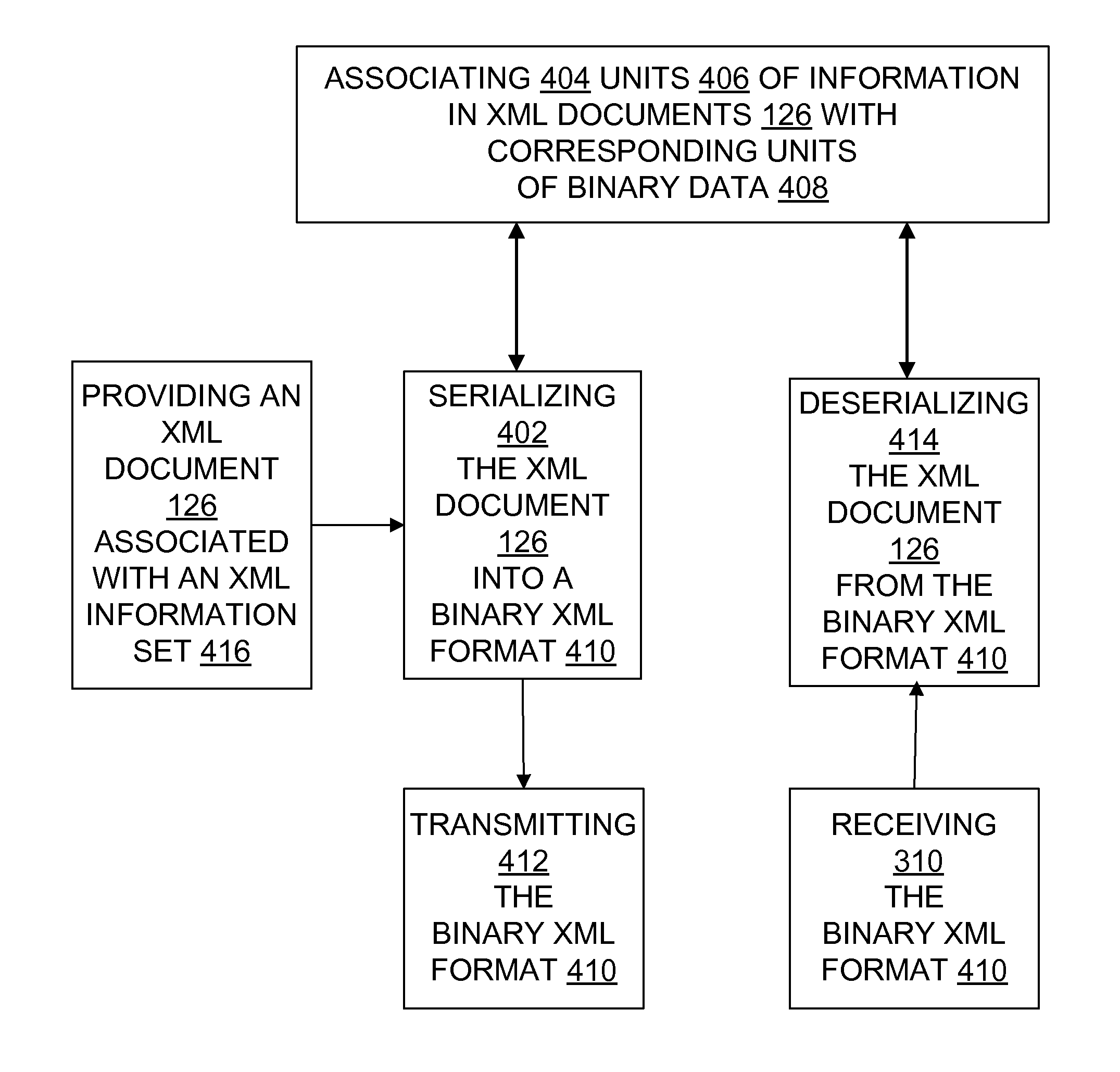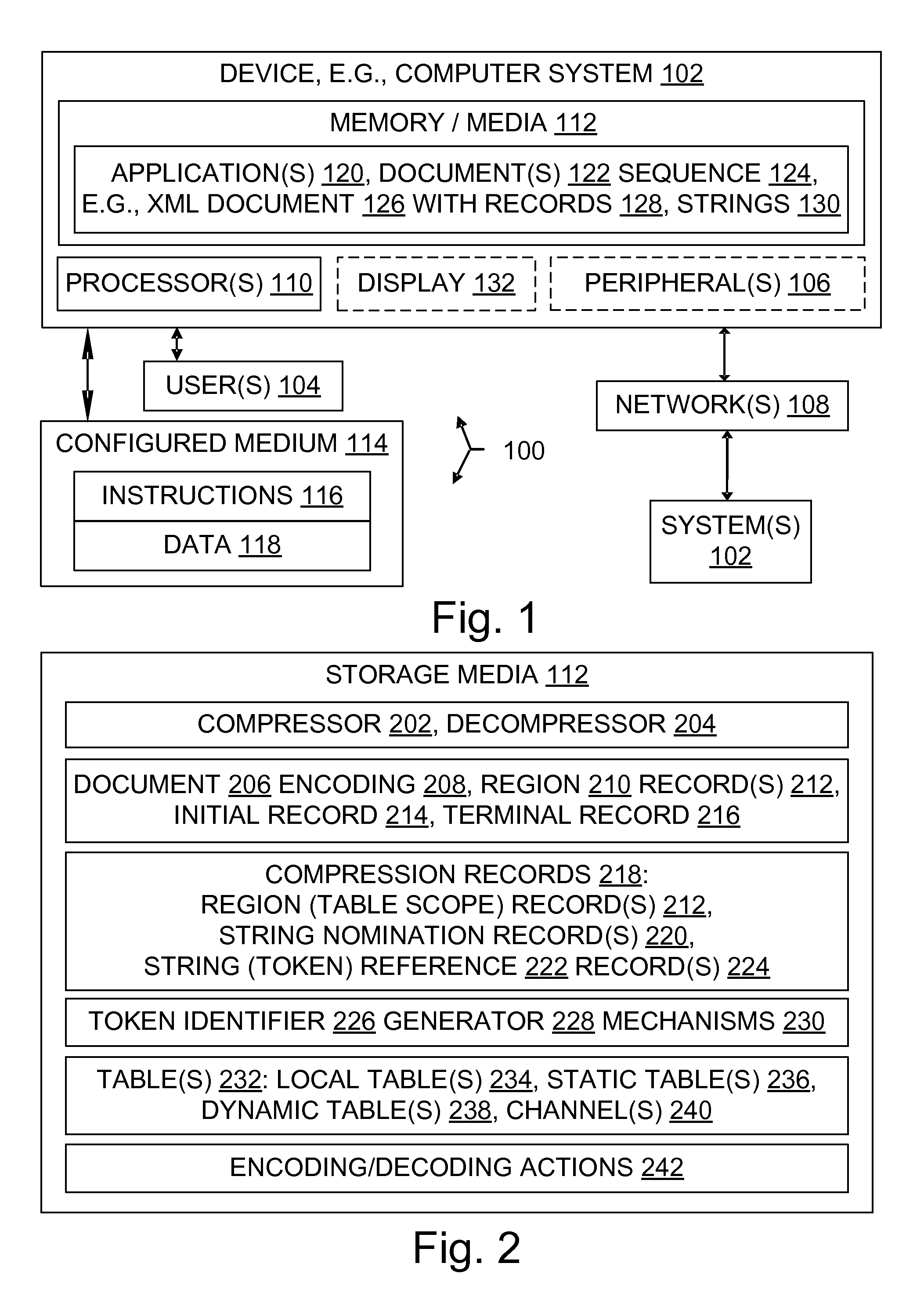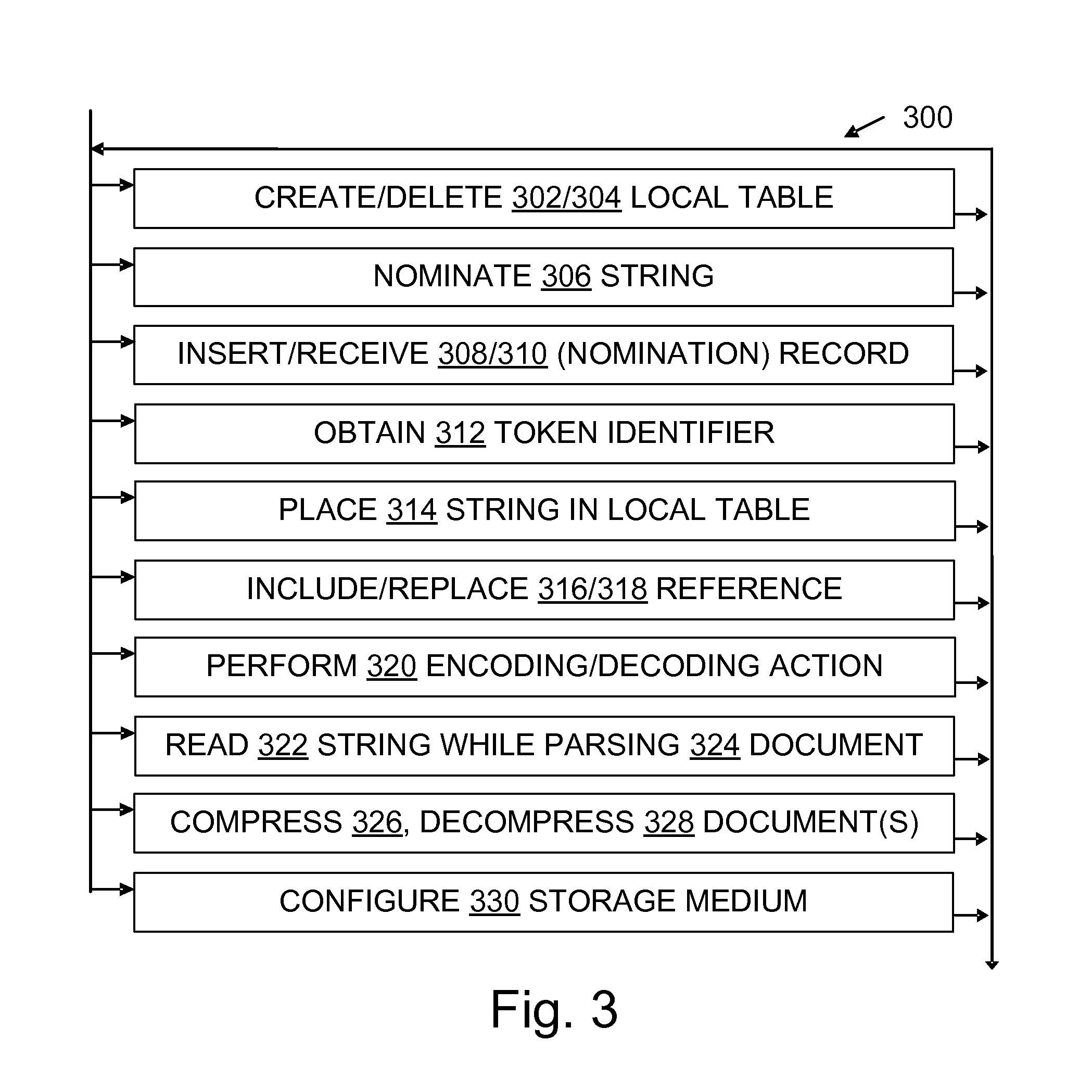Local binary XML string compression
a local binary and xml technology, applied in the direction of code conversion, electrical equipment, etc., can solve the problems of inordinate expenditure of limited computational resources and inefficient coding efficiency, and achieve the effect of improving coding efficiency
- Summary
- Abstract
- Description
- Claims
- Application Information
AI Technical Summary
Benefits of technology
Problems solved by technology
Method used
Image
Examples
Embodiment Construction
Overview
[0017]XML (eXtensible Markup Language) and XML-based mechanisms such as Simple Object Access Protocol (SOAP) can be used to facilitate web services. Through the exchange of XML-related messages, for example, web services can describe their capabilities and allow other services, applications or devices to easily invoke those capabilities. One familiar use of XML is the exchange of data between different entities, such as client and server computers, in the form of requests and responses. The contents of these requests and responses are in the form of XML documents, namely, sequences of characters that comply with the specification of XML. For example, SOAP provides an open and extensible way for applications to communicate over the web using XML-based messages, regardless of what operating system, object model, or language the particular applications may use.
[0018]XML syntax supports definition of tags and of structural relationships between tags. XML documents can impose con...
PUM
 Login to View More
Login to View More Abstract
Description
Claims
Application Information
 Login to View More
Login to View More - R&D
- Intellectual Property
- Life Sciences
- Materials
- Tech Scout
- Unparalleled Data Quality
- Higher Quality Content
- 60% Fewer Hallucinations
Browse by: Latest US Patents, China's latest patents, Technical Efficacy Thesaurus, Application Domain, Technology Topic, Popular Technical Reports.
© 2025 PatSnap. All rights reserved.Legal|Privacy policy|Modern Slavery Act Transparency Statement|Sitemap|About US| Contact US: help@patsnap.com



